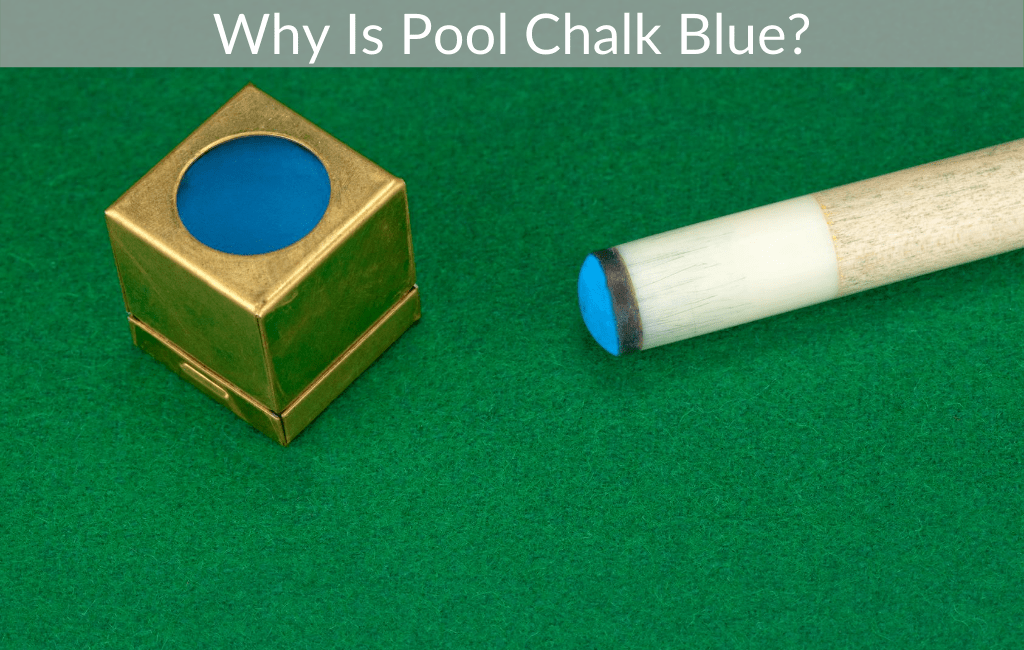What is the Chalk for in Pool?
If you know anything about billiards, then you know you have to put chalk on the tip of a pool cue, but you probably don’t know why. So, like many things related to swimming pools, chalk is related to science. Use chalk on the tip of the pool club to create more friction between the club tip and the cue ball so the club tip doesn’t simply slide over the cue ball. When this happens, mistakes result, which often causes the cue ball to move in an unexpected way.
In this article, we’ll explain what pool chalk is and what it’s used for.
What Does Chalk Do in Pool?
It turns out that in a game of billiards, the blue squares of chalk play an important role. The blue substance compressed into small squares is true chalk. The proper name for this particular type is “Billiard Cue Chalk”. Now, I know you might be asking yourself, “Why is it called a cue stick?” Well, the term “cue” means “pool cue”, also known as a “cue.” With that in mind, the next question is likely to be, “Then why did you draw a pool cue with chalk?”
The purpose of putting the chalk on the pool stick is to coat the end of it so the player can hit the ball correctly. Without the billiard chalk, the cue will hit the ball in a clumsy way, preventing the ball from reaching its intended target.
Pool club chalk comes in a variety of colors like red, orange, yellow, and many others. The different colors give consumers the option to choose the color that best matches their pool table color. When the chalk is very similar to the felt color of the pool table, the chalk residue (if any) will mix with the color of the pool table. The main purpose of choosing colored chalks to match the table is to maintain a clean table look.
Why Do You Use Chalk in Pool?

Simply put, you use chalk in the pool to avoid mistakes. A miss is a fingertip sliding over the cue ball rather than hitting it hard. It’s hard to imagine it happening, but it can and does happen all the time, even with chalk and some of the best players. Just look at this video on YouTube to see how devastating a misunderstanding can be.
The tips of billiard cues are usually made of hard leather. When this hard surface comes into contact with the highly polished cue ball, it easily slides over the cue ball rather than hitting it.
If you don’t use chalk when you play pool, you will:
- experience more bugs
- Hard to get any spin on the cue ball
If you hit the cue ball to the dead center, the problem is less of a problem, but some players still like to take notes before hitting the ball.
How Chalk Can Improve Your Pool Game
It turns out that the blue squares of chalk play a very important role when it comes to billiards or the game of pool, which is also well known in some circles. In some cases, chalk is applied to the tip of the club before each shot to increase the tip’s coefficient of friction so that there will be no misses when hitting the cue ball on off-center hits. If the chalk is not used, the club will hit the ball in a clumsy manner, preventing the ball from reaching its intended target.
Pool chalk is available in a variety of colors. Different color options allow customers to choose a color similar to that of the table. If the chalk is a similar color to the table, any chalk residue left after the shoot will mix with the color of the table.
Are There Disadvantages To Chalking Up Frequently
As far as a successful shot goes, chalk usually doesn’t affect anything. Although, if you’re trying to hit the ball in a way that doesn’t require spin, then you probably shouldn’t chalk the club.
However, it must be pointed out that if you use chalk too often then you risk building up chalk dust on the table and balls. For starters, avoid using chalk on your desk so you don’t have chalk on your device. If you have chalk all over your table and ball, you may get unpredictable results, your shot may not go the distance you want, or the ball may move faster after impact.
How Do You Use Chalk in Pool?
While it’s easy to put chalk on the tip of your pool cue, many people don’t do it right. Don’t just tuck the nib into the block, rub it, cross your fingers, and keep the nib covered, more chalk isn’t always good. Here are our tips for using chalk:
- Brush lightly with chalk. Some describe it as a painting.
- Try to get an even and complete tip.
- Adjust the angle of your pool cue so you can easily see what you’re doing.
- Do not tap your club or blow it to remove excess chalk.
So it’s not that hard, but you can see where a lot of novice pool players go wrong. Don’t be that guy!
Final Words
OK, here you go. Now that you know what you know about chalk batting, you’ll be a pro in no time!
